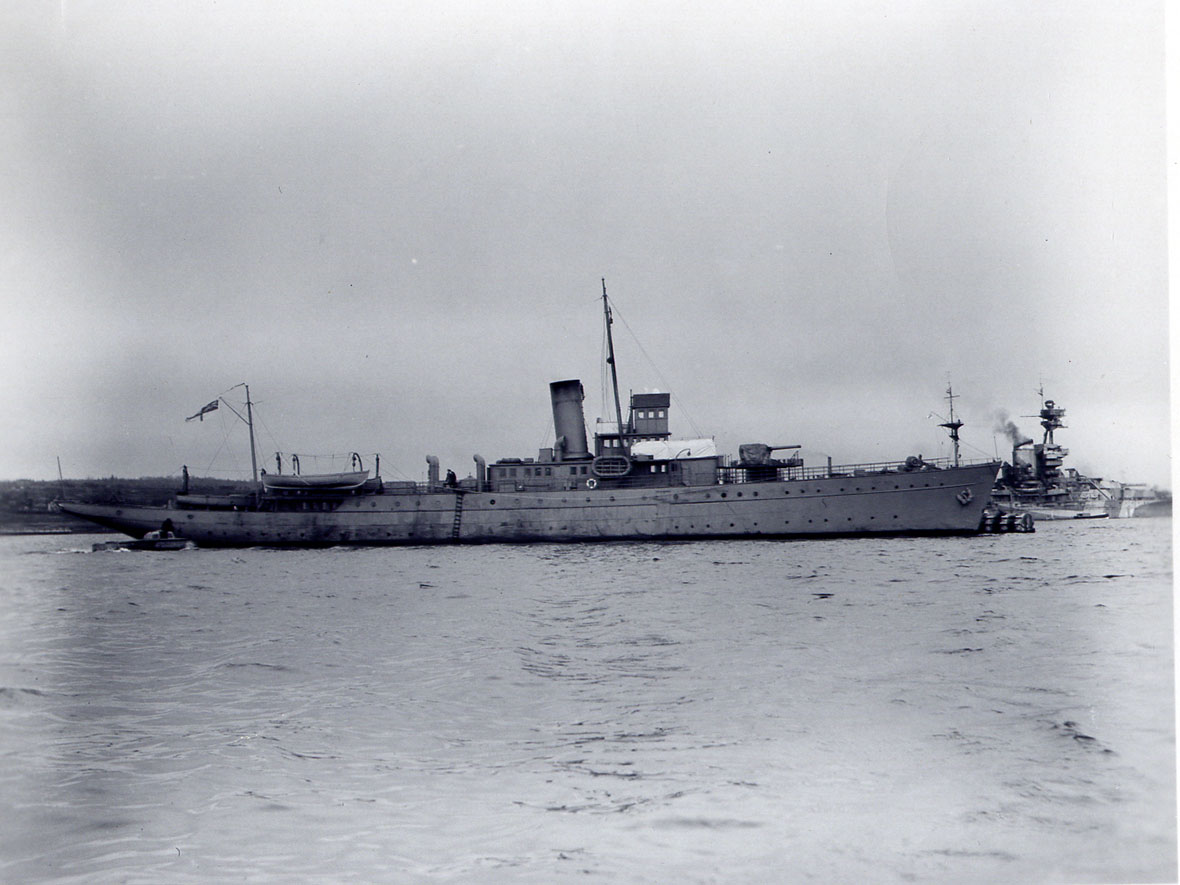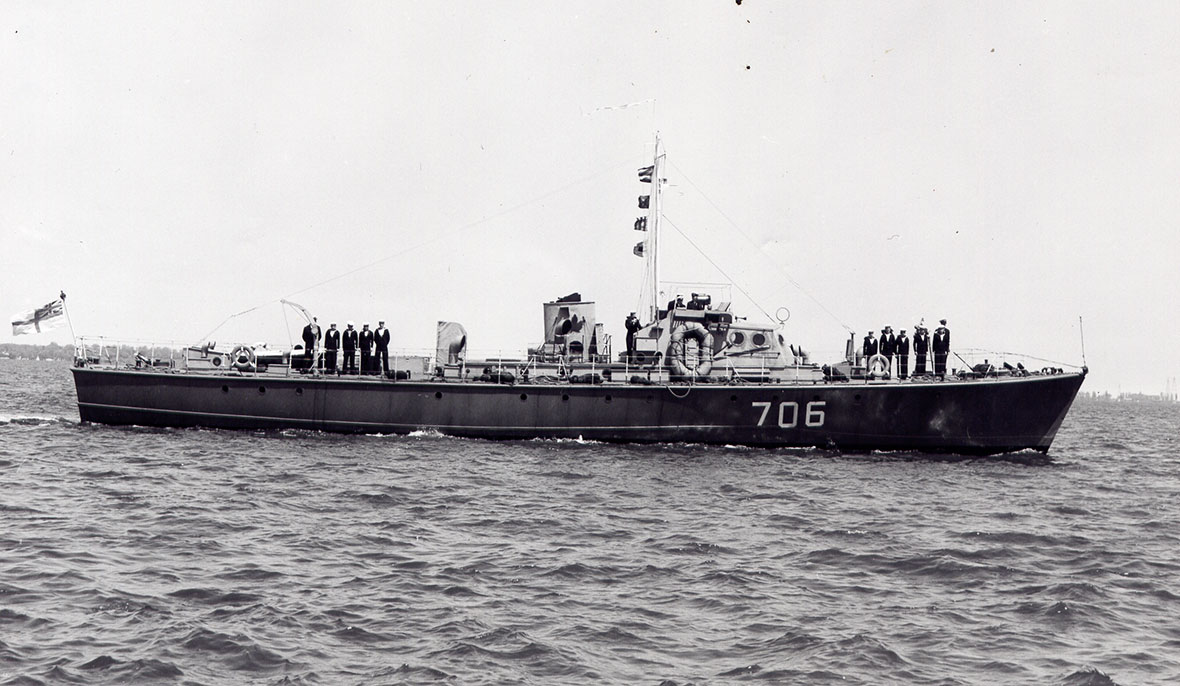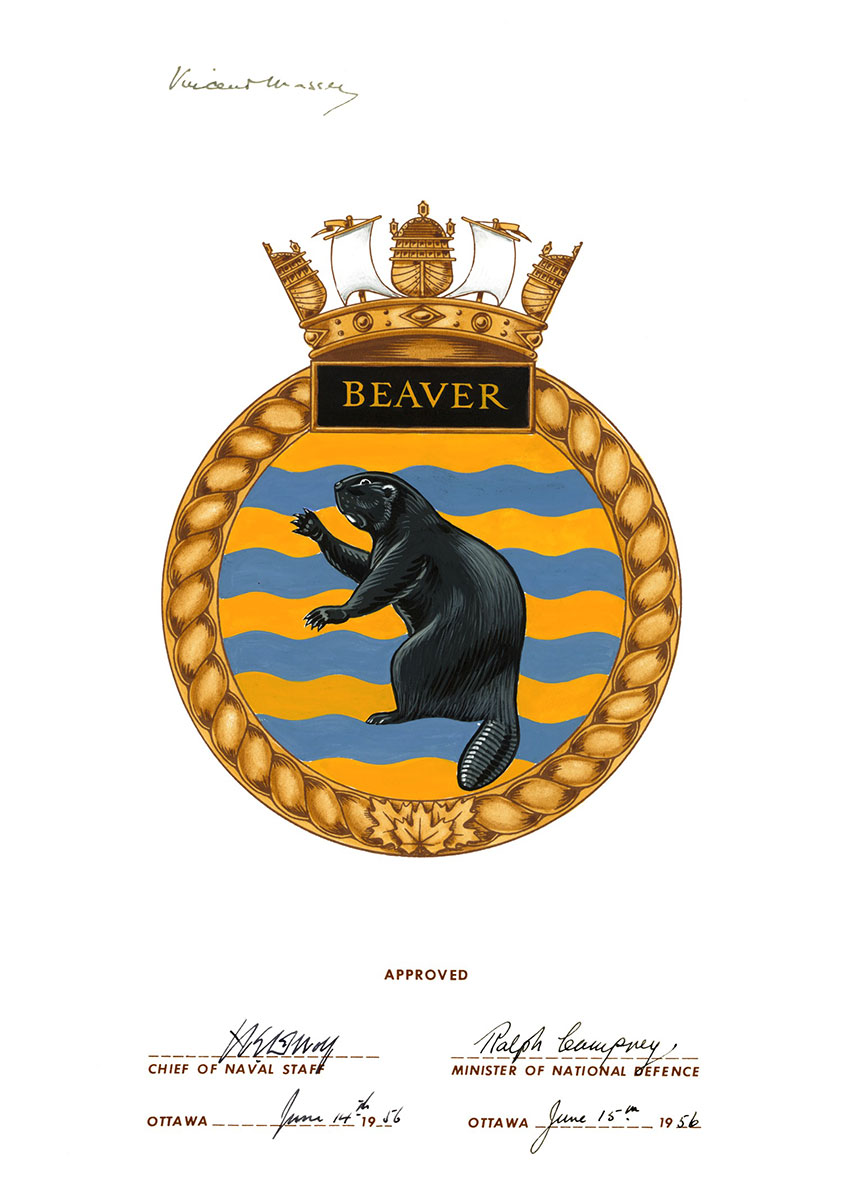HMCS Beaver
There have been 2 vessels named Beaver in the Royal Canadian Navy.
HMCS Beaver (1st of the name) (S10 / Z10)
Empowered to requisition British-registered craft of any description from private owners, the Royal Canadian Navy failed to turn up vessels with any real potential for anti-submarine use in 1939. A discreet survey of the United States yacht market showed promise, but purchase was impossible without contravening neutrality regulations. It was then arranged for a sufficient number of Canadian yachts, however inadequate, to be requisitioned from their owners, who then replaced them with yachts purchased in the United States. These replacements had, of course, already been selected with care by the Royal Canadian Navy, which, “discovering” that the replacements were better than the yachts originally requisitioned, took over the replacements instead. By early 1940, 14 yachts had been acquired in this fashion, armed, and given animal names. Five of them (HMCS Beaver, HMCS Cougar, HMCS Grizzly, HMCS Renard and HMCS Wolf) had served in the United States Navy as auxiliary patrol craft from 1917 to 1919. Makeshift though the yachts were, they shouldered the responsibility for local anti-submarine defence until the summer of 1941, when corvettes began to be available to replace them, and they afterward proved their worth as training vessels and guard ships.
The oldest of her type, HMCS Beaver (former name: Aztec) was commissioned on April 1, 1941 at Halifax, Nova Scotia and assigned to Halifax Local Defence Force. She was employed much of the time as a radar training ship but served briefly, first with Saint John, New Brunswick Force and then with Sydney Force toward the end of 1942. On July 29, 1943, she arrived at Digby, Nova Scotia to become a training ship for DEMS (Defensively Equipped Merchant Ship) gunners, and was later used for seamanship training. HMCS Beaver was paid off on October 17, 1944, sold in 1946, and resold 10 years later for scrap.
HMCS Beaver (2nd of the name) (Q106 / ML 106)
The versatile 112-foot (34.2 m) B class motor launch was designed in England by the Fairmile Company and the boats were accordingly known as Fairmiles. Eighty were built in Canada. The Fairmiles played a useful role as escorts in the St. Lawrence River and the Gulf of St. Lawrence, and as escorts to convoys between Newfoundland and the mainland. They also carried out anti-submarine patrol, port defence, and rescue duties; releasing larger escort craft urgently needed elsewhere. Most of the Fairmiles were sold at war’s end, but half a dozen remained in service as training ships on the Great Lakes in the 1960s; HMCS Beaver was one of those and she was commissioned on July 28, 1943 and paid off July 30, 1945. She was re-commissioned after the war on May 18, 1954 and served as a training vessel until paid off November 13, 1957.
Battle honours
- Atlantic 1942


